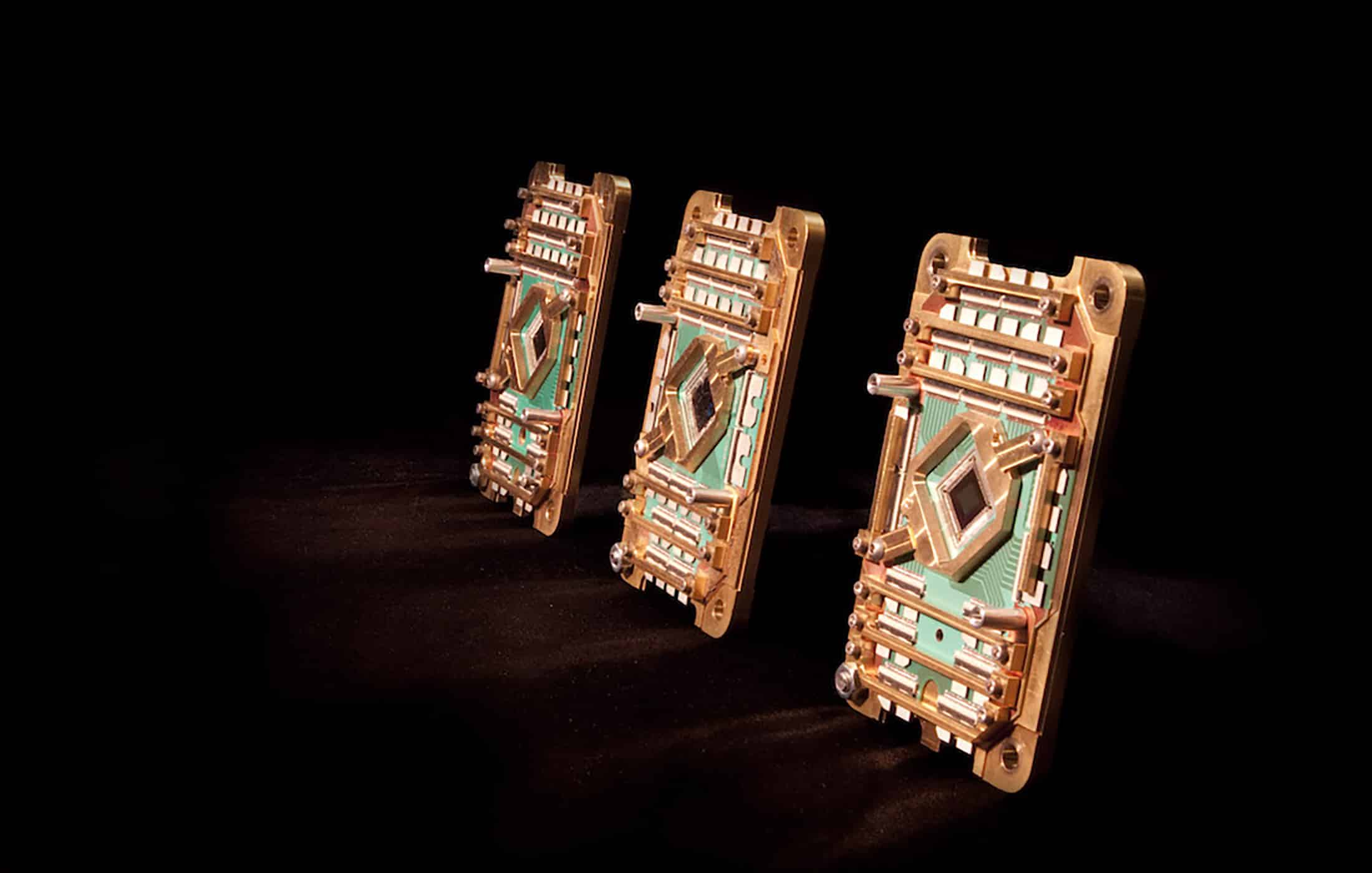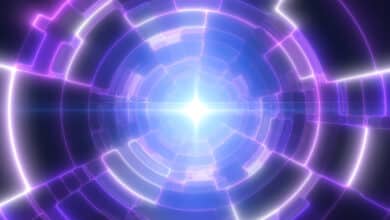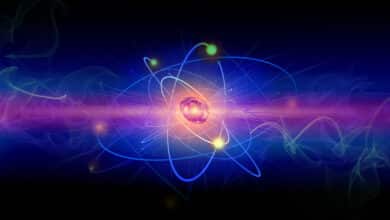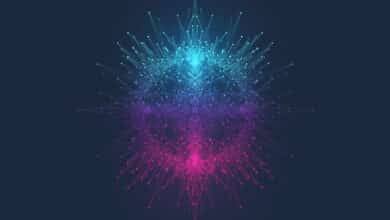Quantum Computing Modalities: Quantum Annealing (QA)

Table of Contents
(For other quantum computing modalities and architectures, see Taxonomy of Quantum Computing: Modalities & Architectures)
What It Is
Quantum annealing (QA) is a special-purpose quantum computing modality designed to solve optimization problems by exploiting quantum tunneling and the adiabatic principle. It’s a special case of Adiabatic Quantum Computing (AQC). The idea is to encode a problem (typically an NP-hard optimization) into an energy landscape, where the lowest energy (ground) state corresponds to the optimal solution. A quantum annealer starts in the easily prepared ground state of a simple initial Hamiltonian (energy function) and slowly interpolates to a final Hamiltonian that represents the problem. If the interpolation (anneal) is slow enough, the system is supposed to remain in its ground state (by the adiabatic theorem) and end up in the problem’s optimal state.
In practice, quantum annealers like D-Wave’s systems work with a spin-glass model. The problem is formulated as a set of qubits (quantum spins) with programmable interactions. For example, one common formulation is an Ising model or equivalently a quadratic unconstrained binary optimization (QUBO) problem. The Hamiltonian of the final problem might be written as:
$$Hproblem = ∑i<jJij σizσjz + ∑ihi σiz,H_{\mathrm{problem}} \;=\; \sum_{i<j} J_{ij}\,\sigma^z_i \sigma^z_j \;+\; \sum_{i} h_i\,\sigma^z_i,Hproblem=∑i<jJijσizσjz+∑ihiσiz$$,
where $$\sigma^z_i$$ are Pauli Z operators on qubit $$i$$, $$J_{ij}$$ are coupling strengths between qubits, and $$h_i$$ are local fields. This energy function encodes the cost function to minimize. The initial Hamiltonian is usually a transverse field like $$H_{\mathrm{initial}} = \sum_i \Delta ,\sigma^x_i$$ (which has an easy ground state with all qubits in state $$|+\rangle$$). The annealing schedule gradually shifts from $$H_{\mathrm{initial}}$$ to $$H_{\mathrm{problem}}$$:
$$H(t) = (1−s(t)) Hinitial + s(t) Hproblem,H(t) \;=\; (1-s(t))\,H_{\mathrm{initial}} \;+\; s(t)\,H_{\mathrm{problem}},H(t)=(1−s(t))Hinitial+s(t)Hproblem$$,
with $$s(t)$$ ramping from 0 to 1 over the anneal time. Throughout this process, quantum tunneling (induced by the transverse field term) helps the system escape local minima by transitioning through energy barriers. Ideally, at the end of the anneal, the qubits settle into a configuration that is a near-optimal (hopefully optimal) solution to the original problem.
Key Academic Papers
The concept of quantum annealing was introduced by Kadowaki and Nishimori (1998) and by Brooke et al. (1999) as a quantum analog of classical annealing. A key theoretical framework is the adiabatic theorem, which QA leverages (closely related to adiabatic quantum computing discussed next). A comprehensive review by Albash and Lidar (2018) covers both the promise and challenges of QA/AQC. They discuss how QA started as an approach for optimization and evolved in theory toward universality, as well as obstacles like small spectral gaps and noise. On the experimental side, a seminal achievement was D-Wave’s demonstration of a programmable 128-qubit quantum annealer, followed by scale-ups to 512, 1000+, and now 5000+ qubits. D-Wave’s technical reports detail the architecture of these machines (e.g. the Pegasus topology with 15 connections per qubit to reduce embedding overhead).
Comparison To Other Modalities
Unlike universal gate-based quantum computers, quantum annealers are analog machines specialized for optimization. They do not perform arbitrary quantum logic operations; instead, they evolve according to the physics of the problem Hamiltonian. In theory, adiabatic quantum computing is polynomially equivalent to standard circuit computing (as I discuss in the AQC post). However, quantum annealing typically refers to a restricted form (often using so-called “stoquastic” Hamiltonians) geared toward finding ground states of spin models. This restriction can make the device easier to implement, but it means QA may not harness the full power of a universal quantum computer. In essence, QA trades generality for near-term practicality: current annealers have hundreds or thousands of qubits, far more than general-purpose quantum computers, but they can only solve certain classes of problems (e.g. Ising models, scheduling, portfolio optimization).
Advantages
- Hardware Availability: Quantum annealing is already realized in commercial devices. D-Wave Systems has built annealers with over 2000 qubits (D-Wave 2000Q) and now over 5000 qubits in its Advantage system. These superconducting flux qubits are operated at millikelvin temperatures. The high qubit count allows encoding relatively large problems (e.g. an optimization with thousands of variables), something gate-model quantum computers cannot yet do.
- Natural Optimization Solver: QA directly tackles optimization and sampling problems by physically manifesting the energy landscape. The problem mapping is straightforward: many NP-hard problems (max cut, graph coloring, scheduling, etc.) can be written as Ising or QUBO forms. The quantum annealer then naturally relaxes toward low-energy solutions. This physics-driven approach means one doesn’t need to design a circuit; instead, one programs the coupling strengths $${J_{ij}, h_i}$$.
- Quantum Tunneling Benefit: Unlike classical simulated annealing (which uses thermal fluctuations), quantum annealing uses tunneling to overcome energy barriers. For some rugged landscapes, tunneling can reach the global minimum faster by going through barriers rather than over them. This can give quantum annealing an edge on certain problem instances where classical solvers get stuck in local minima.
- Relative Robustness to Some Noise: Because QA uses many qubits collectively to represent a solution and largely operates in a “ground state seeking” mode, some forms of noise just perturb the energy landscape slightly rather than causing discrete gate errors. In practice, error correction is still extremely hard for QA, but minor analog errors might only slightly affect solution quality rather than completely ruin a computation.
Disadvantages
- Not Universal: Quantum annealers cannot execute arbitrary algorithms like Shor’s or Grover’s algorithm out-of-the-box. They are essentially special-purpose optimizers. While any computation could in theory be recast as an energy minimization problem, that often requires an impractical number of qubits or coupling precision. Thus, QA is mainly useful for optimization, not general computation.
- No Guaranteed Speedup: It remains an open question whether current quantum annealers offer a decisive speedup over the best classical algorithms. Studies have shown that, for carefully chosen problem instances, D-Wave devices can find solutions somewhat faster than classical heuristics, but for many cases classical solvers catch up or even outperform. A Science study in 2014, for example, found no clear evidence of quantum speed-up over classical simulated annealing for random instances on a D-Wave machine (the quantum device did not significantly outpace a well-tuned classical algorithm). In part, this is because stoquastic annealing (with only positive/real amplitudes) can sometimes be efficiently simulated by classical methods. Essentially, the worst-case complexity may be no better than classical, though specific cases can benefit.
- Limited Connectivity and Embedding Overhead: Real QA hardware has a particular qubit connectivity graph (e.g. D-Wave’s older Chimera graph or the newer Pegasus graph). If a problem has interactions between variables that don’t map directly to hardware couplers, one must use minor embedding: representing a single logical variable by a chain of physical qubits. This incurs significant overhead. For example, to embed a fully connected graph (clique) of $$N$$ logical nodes onto the hardware, one might require chains of multiple physical qubits per node, drastically reducing the effective problem size that fits. Longer chains also mean more susceptibility to errors (if any qubit in the chain flips incorrectly, the logical variable’s integrity is lost). The Pegasus topology of D-Wave’s Advantage system improved connectivity (each qubit connects to 15 others instead of 6 in Chimera), allowing shorter chains and more compact embeddings. Still, highly connected problems remain challenging to embed without using up most qubits.
- Analog Precision and Noise: Quantum annealers are analog devices – the accuracy of the solution depends on precise control of thousands of analog parameters (biases $$h_i$$ and couplings $$J_{ij}$$) in a noisy environment. Residual noise and imperfect control can cause the system to miss the true ground state, returning an excited state (a suboptimal solution). In practice, one must run the annealer many times and use error mitigation techniques. There is no digital error correction in current QA; environmental couplings can cause excitations that the anneal doesn’t correct, especially if they occur when the minimal energy gap is small.
- Limited Readout and Iteration: The typical annealing process outputs a candidate solution (bitstring) by measuring all qubits at the end. If the solution is not optimal, one can re-run the anneal multiple times to sample different results. However, the annealer doesn’t provide a straightforward way to implement iterative classical-quantum algorithms or conditional logic during the run; it’s essentially a one-shot solver that must be reset each time. This limits the types of algorithms one can implement (contrast with a gate-based quantum computer which can have conditional gates, mid-circuit measurements, etc.).
Cybersecurity Implications
Today’s quantum annealers do not threaten standard cryptography the way a universal quantum computer would. Quantum annealing is not known to efficiently perform prime factorization, discrete log, or other algebraic problems underlying RSA and ECC. In fact, attempts to factor numbers via quantum annealing have only succeeded for very small integers, and with no speed advantage over classical methods. Thus, RSA, Diffie–Hellman, and ECC remain safe against current QA machines. However, QA could impact certain optimization-based or heuristic-based security systems. For instance, quantum annealing might help in breaking optimization-based cipher systems or solving hard instances that appear in cryptanalysis (like optimizing differential characteristics or the best paths in hash collision searches), though this is speculative. Some cryptographic protocols (like certain lattice-based schemes or code-based schemes) reduce to NP-hard problems – QA might offer a new way to tackle those, but so far there’s no evidence of a dramatic advantage.
On the defensive side, one could also use quantum annealers to improve cybersecurity: e.g. for hardening systems via optimized configurations, solving scheduling of security monitors, or possibly in certain machine learning models for anomaly detection. Another consideration is that quantum annealers are available to adversaries now (via cloud access to D-Wave’s machines, for example). While they can’t break encryption, an adversary could use QA to solve certain optimization problems in planning attacks or allocating resources. Overall, QA is not the modality that gives us Shor’s algorithm, so it’s not the one forcing a migration to post-quantum cryptography. It is, however, a stepping stone and a part of the quantum computing landscape that security professionals should monitor, particularly as a potential tool for optimization tasks in security contexts.
Who’s Pursuing
D-Wave Systems (Canada) is the primary company commercializing quantum annealing. They have delivered successive generations of annealers (D-Wave One, Two, 2X, 2000Q, Advantage) and provide cloud access to them. Several organizations have acquired D-Wave machines (Lockheed Martin, Google/NASA Ames, Los Alamos National Lab, USC/ISI) to explore applications. Academic groups, like those led by Prof. Daniel Lidar (USC) and Prof. Matthias Troyer (formerly ETH Zurich, now at Microsoft), have been deeply involved in benchmarking and improving quantum annealing performance and error correction.
Another company, Fujitsu, has a “Digital Annealer” which mimics quantum annealing in classical hardware (it’s not quantum, but it shows the commercial interest in this style of computing for optimization).
On the software side, startups like 1QBit have worked on formulating industry problems for quantum annealers. In summary, quantum annealing is actively pursued by industry for near-term applications in optimization, even as researchers debate its performance versus classical algorithms.



